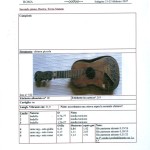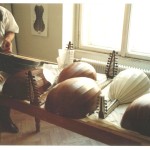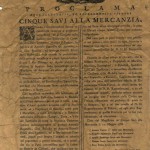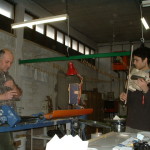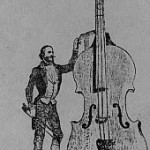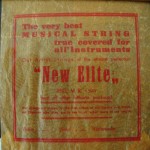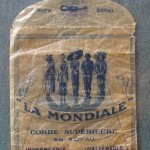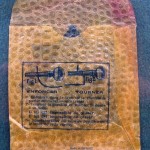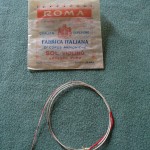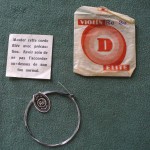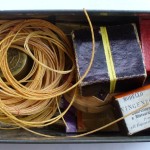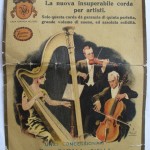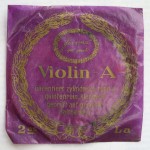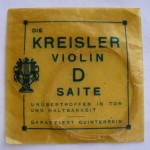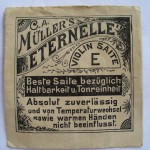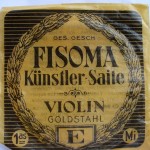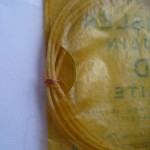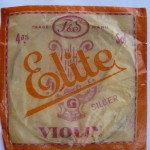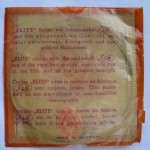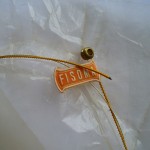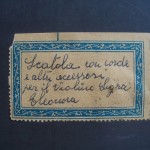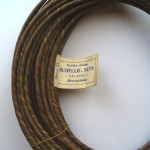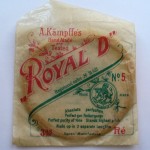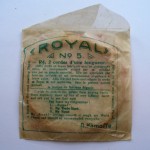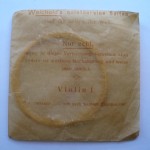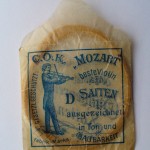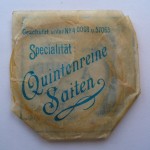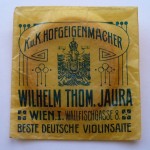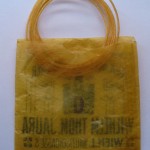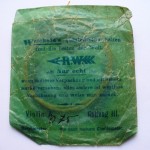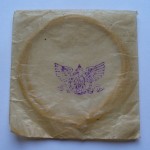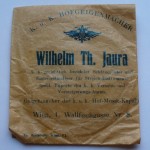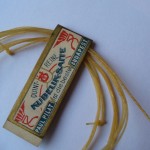6 and 4 courses XVIII century Mandolin setup: A few considerations
by Mimmo Peruffo
Introduction
When faced with the problem of what kind of strings were used on the 18th century Mandolins of six and four courses, the first thing that stands out is the great heterogeneity of these set up. What is really hard to understand is particularly on the 4 course Neapolitan Mandolin: here we find together gut strings; single and twisted metal wires; wound strings on gut/silk. To complete the already heterogeneous picture, for the 4th course there are also two choices between unison and octave.
Here is the first question: why was it used a gut 1st and not a metal wire like the other courses, when it was then in use in the 1st half of the nineteenth century?
This question is logic: the average breaking load stress (Breaking Point) of the gut is ‘only’ 34 Kg/mm2, much lower than the average of iron and bronze of the time, which easily exceeded 100 Kg/mm2.
To understand the reason, we must first start from the mechanical and acoustic behaviour of the string. In this way we will be able to try to figure out what were the guiding criteria used to determine the vibrating lengths of plucked and bowed instruments, including Mandolins.
Rome (Museo Nazionale degli Strumenti Musicali)
Investigations concerning lute bass bridge-hole measeuraments and for the ‘Museum old string Database Project’ (Febbrary and April 2007, Febbrary 2008)
(we collected some hundreds of pictures; pratically all the plucked and bowed instruments of the museum, harps not enclosed)
Continue reading
Wien (Kunsthistorische National Museum)
Investigations concerning the lute bass bridge-hole measeuraments ( 1993 year) and for the ‘Museum old string Database Project’ (January 2005)
London (Victoria & Albert museum)
Investigations concerning lute bass bridge-hole measeuraments and for the ‘Museum old string Database Project’ (February 2010)
Continue reading
Kremuenster (a monastery close to Linz- Austria)
Investigation concerning the lute bass bridge-hole crossing diameters (January 2005)
(These are the first pictures in the world of this very interesting collection )
Continue reading
Oxford (Ashmolean Museum)
Investigations concerning some tailpiece-hole measeuraments and for the ‘Museum old string Database Project’ (November 2008).
Continue reading
Nuremberg (Germanisches National Museum)
Investigations concerning lute bass bridgehole measeuraments ( in different years) and for the ‘Museum old string Database Project’ (August 2008)
Continue reading
Innsbruck (Ferdinandeum Museum)
Investigation concerning the ‘Museum old string Database Project’ (March 2007): there are very interesting complete doublebass gut string setu-ps.
Continue reading
Bruxelles (Musèe Royal Instrumental)
Investigations concerning lute bass bridge-hole measeuraments (made out in different years) and for the ‘Museum old string Database Project’ (June 2004 and December 2006)
Continue reading
Historical stringmaking
These are the first immages in the world concerning some phases of the historical gut string manufacturing teached us by some elderly italian stringmakers of the Abruzzi’s region (Center Italy) in the 2008 and 2009 years. There is a strict connection with the historical sources of the 18 and 19th centuries.
The Historical Veneto stringmaking
City of Padua
Chronology of events of the string maker ‘Priuli so-called Romanin ‘ in the city of Padua (our research of 2002-2004)
1) The string making was founded in 1613 by Antonio Romanin which was succeeded by Antonio Priuli. The company was therefore called ‘Antonio Pruli so-called Romanin ‘ and so remained until became property inherited by Callegari family.
The Historical Abruzzi’s stringmaking
The reasons of our research
The research we are going to present started almost unconsciously in autumn 2006, when we went in Acerra (Na) to interview one of the last old stringmakers from Abruzzo, heir of the tradition of his father who was working in Naples. Our intention was to gather some general information about the history of Italian stringmakers.
Cello da Spalla String Project
n the 2006 year we received a request from the luthier Dmitry Badiarov to design a Cello da Spalla setup. These are a few pictures of the first tests on it.
The Octobass String Project
In 1996 we received a request by the Musée de la Musique in Paris for the realization of two copies of original setup of ‘Octobass built in 1850 by Jean Baptiste Vuillaume (1798-1875).

